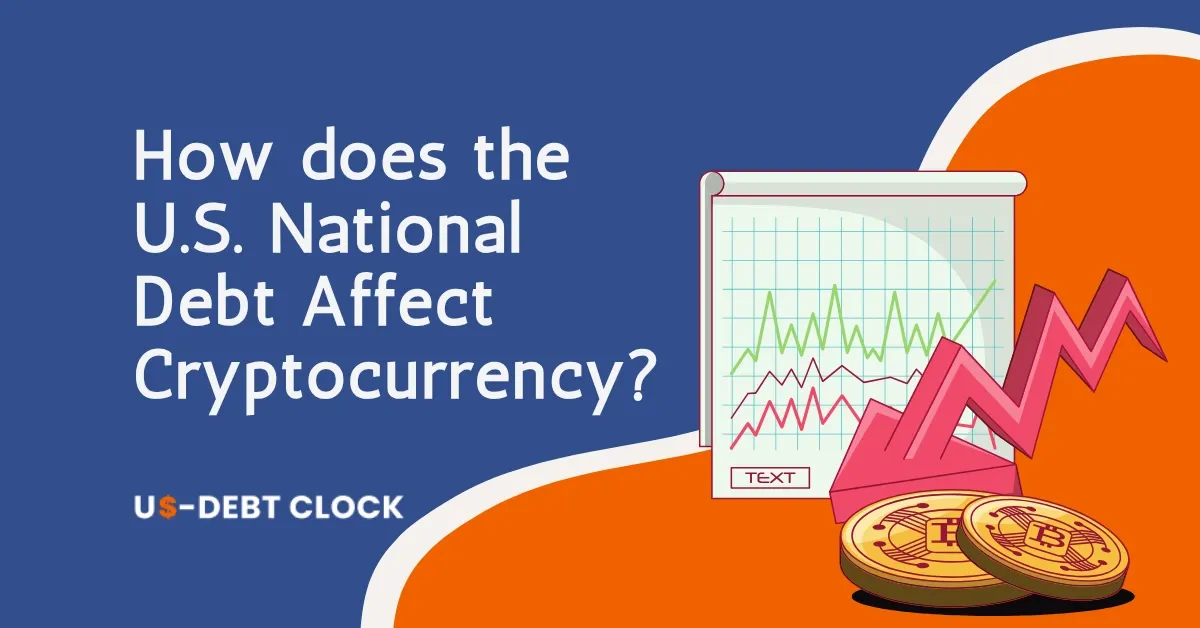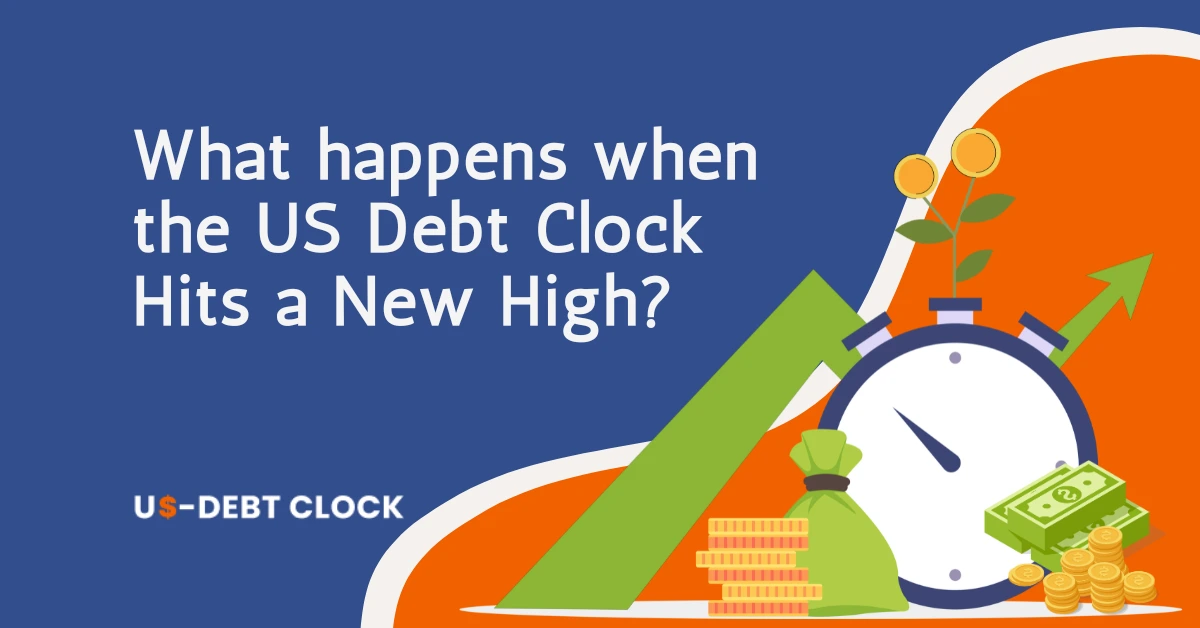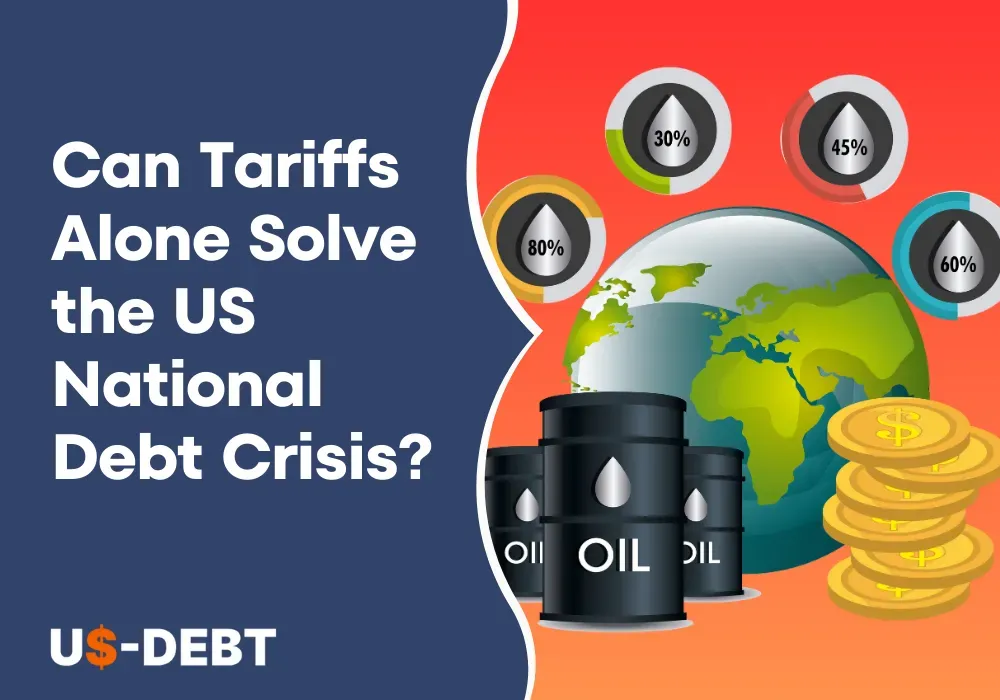The concept of the US Debt Clock brings along the monitoring of national debt, federal budget deficit, debt-to-GDP ratio, taxpayer liability, interest payments, and debt per citizen. All these economic factors make us curious if the US debt clock can predict economic recessions.
So what is economic recession? Simply, an economic recession is a period when economic activity is low. Low economic activity means businesses are earning less, which leads to less production and the salaries of employees being reduced.
If we want to get insights into economic recessions, it is essential to look into the USA's GDP growth, employment rate, consumer spending, real estate business, stock market, and business investments along with the US Debt Clock. All these factors play a significant role in determining the overall state of the US economy.
We need to take a comprehensive approach to these key indicators of economic health to understand economic changes and predict the changes in the US economy. Let us learn historical debt trends and the key indicators of the US Debt Clock to watch out for economic recessions.
Historical Debt Trends Before the Economic Crisis
US debt levels increased during the crisis, and the post-crisis debt-to-GDP ratio typically surged in the USA. Here are some examples of historical debt trends before the economic crisis in the USA.
1929 to 1939 (The Great Depression)
Before the great depression hit the USA, the debt-to-GDP ratio of the United States was around 16 to 20%. When the Great Depression was over, the debt-to-GDP ratio grew by about 40% by 1939.
The reason this change occurred was the fact that the US Federal spending was rising to stimulate the economy through New Deal programs.
1941-1945 (Second World War)
The debt-to-GDP ratio, which was 40% before WWII, soared to over 100 % when the war ended. This is one of the highest debt-to-GDP growth in US history.
The reason this massive change occurred was that the USA was spending huge amounts of money to finance the war effort, be it war-related expenditures or military spending and loans.
1945 to 1970s (Post-War Economic Boom)
The debt-to-GDP ratio decreased after the war as the US economy grew at a strong pace. Even though military spending continued, post-war economic expansions helped reduce the debt-to-GDP ratio.
After a certain time, the USA was able to keep the level of debt relatively stable as the debt-to-GDP ratio started to decline after the war.
1970s (Economic Stagnation)
In the early 1970s, the debt-to-GDP was 30%, which reached 35% at the end of the 1970s. The US government addresses economic stagnation with increased deficit spending.
This change in debt-to-GDP increased military spending on the Vietnam War. It was also due to the oil crisis.
1980s to 2000s (Reagan- Clinton Era)
In the early 1980s, the debt-to-GDP was 30-35%, which rose to 50% at the end of the 1980s and fell to 40% during the 1990s.
These changes happened as the US government increased its spending on defense, paired with tax cuts under President Reagan, whereas, during President Clinton, there was a period of budget surpluses due to strong economic growth and fiscal transactions.
2007 to 2008 ( 2000s Financial Crisis)
The debt-to-GDP ratio, which was 60% in the early 2000s, rose to 80% by 2009. The USA faced a financial crisis with severe recessions.
All this happened due to large fiscal packages, bank bailouts, and tax cuts during and after the financial crisis.
Post 2008 (Recovery & COVID Pandemic)
The debt-to-GDP ratio, which was 105% before the pandemic, reached 120% after COVID-19, reaching new levels after the Second World War. All this is due to COVID-19.
The US Debt grew due to recovery support with unemployment benefits and business support programs. This debt is the result of massive fiscal spending programs.
Key Indicators of the US Debt Clock to Watch for Economic Recessions
GDP Growth
Gross Domestic Product (GDP) is the monetary value of goods and services produced in a year in a certain country. GDP Growth is the changes in GDP within a certain interval of time.
(GDP) is a critical factor to look out for in economic recessions as changes in GDP need to be adjusted to serve both inflation and deflation. This brings out two concepts of GDP in the USA: Nominal GDP & Real GDP.
Nominal GDP is the total value of all products and services produced in a period, either quarterly or annually. Real GDP is the GDP that is adjusted for inflation.
According to economists, the ideal average annual GDP growth of the USA should be 2% to 3%. USA's GDP growth changes with the change in the president as a president's economic plans and policies have a significant impact on GDP.
The higher the GDP, the lower the chances of economic recession, as the GDP shows how the economy expands and contracts in response to various economic events in the USA.
Employment Rate
Employment Rate is the ratio between the number of employed individuals in a country to the total number of people in the USA within a specific time. The employment rate is a direct indicator that shows how the economic policies are working for the citizens of the USA.
If you want to predict economic recessions, it is essential to know how many employment opportunities US citizens are being provided. Higher employment rates mean more people are earning money, which leads to higher economic transactions, i.e., high consumer spending.
The chances of economic recession are low when there's a flow of money going around people and businesses. A higher employment rate improves the economy of the USA.
Employment rates also indicate how much money is being invested in the business as employment opportunities grow whenever investments are going on around new projects. Every business and project needs human resources, so the employment rate indicates the amount of money being invested.
Consumers Spending
Consumers' Spending is essential to lower the chances of economic recession. As we learned earlier, higher employment rates lead to higher consumer spending. How this works is. Employed people earn money, which means they have money to spend on their expenses and invest in business every month.
The money that US consumers spend helps the US product business keep on running, and the money they invest promotes new businesses and projects in the USA. Ultimately, the business and projects help to create employment opportunities, keep the money flowing, and gain higher GDP for the USA.
Consumers must be given the chance to invest as a lack of investment opportunities means people are just going to save the money they earn. Saving money isn't quite right for the economy, as consumer spending is what keeps the money flowing within the US.
Even on investments, when consumers themselves invest, they are more aware of where their money is being used and what the outcomes are rather than the banks using their money to invest in business on higher interest rates and have no clarity about where the money is being spent.
Real Estate Business
One of the basic human needs is a home, a place to live in. Real Estate deals with the very thing. Be it industrial, apartment, or retail properties, all these are essential to avoid economic recessions in the USA.
The Real Estate Business is one of the longest-running businesses in the USA. People like to invest in industrial, apartment, or retail properties as they are long-term investments. Real estate is the buying and selling of lands and buildings, which keeps the money flowing.
When US citizens want to build a house, this creates work opportunities for the workers. All the raw materials needed help to keep the business running. The simple act of building a house creates earning opportunities for people; now, think about all the real estate businesses going around in the USA and the opportunities they are creating.
Economists' Opinion on National Debt and Recession Risks
James Poterba, President and CEO of the National Bureau of Economic Research, stated that it is uncertain how long increasing inflation will persist, speculating that it may continue for a few more months or until the second half of 2022, according to the Peter G. Peterson Foundation on Economic Outlooks. He emphasized a perception issue that can extend widespread inflation in addition to inflationary reasons including global transportation, supply-chain, and workforce challenges, as well as central bank interest rate and balance sheet decisions.
"The core inflation is becoming more broad-based between both services and goods," issued a warning by Diane Swonk, Chief Economist at Grant Thornton. Especially in the housing sector, where I believe we will easily witness inflation that will probably approach, if not surpass, the peak we witnessed during the height of the housing bubble, particularly in regard to house ownership expenses. The Fed can take action on that, which is concerning. I believe that will remain since it is more persistent.
Is the Debt Clock a Reliable Predictor?
Experts and economists believe that analyzing national debt provides insights into economic health and gives an idea about economic recessions. The point to be noted is that the US Debt Clock is merely an economic indicator, not a definitive predictor.
If you want to predict the future of the economy in regards to economic recession, you should look into the historical debt trends before the economic crisis as some or other way history repeats itself & the past is the reminder of the future.
You should look into the key indicators of the US debt clock to watch for economic recessions or listen to economists' opinions on national debt and recession risks. Let's hope the USA doesn't fall into an economic recession.
FAQs
How many US recessions have there been?
According to the National Bureau of Economic Research (NBER), the United States has experienced 34 recessions since 1854.
When was the last US economic recession?
The last US economic recession was during the COVID-19 Pandemic.
What are the last 11 US recessions?
The last 11 US recessions are the COVID-19 Recession, the Great Recession, the Dot-Com Recession, the Early 1990s Recession, the Double Dip Recession, the Early 1980s Recession, the Oil Crisis Recession, the Vietnam War Recession, the Early 1960s Recession, the Korean War Recession, and the Korean War Recession.
What was the biggest recession in US history?
The biggest recession in US history was the great depression( 1929-1939).
How does the US Debt Clock work?
The US Debt clock works based on data about national debt, spending, GDP & other economic factors.
What happens if the US defaults on debt?
If the US defaults on debt, then a great depression occurs, along with a market crash, high interest rates, and a global financial crisis.
How long does debt last in the USA?
The debt lasts in the USA until it's paid off; there's no expiration date.
Why does the US have so much debt?
The US has so much debt due to budget deficits, economic crisis & military spending.



